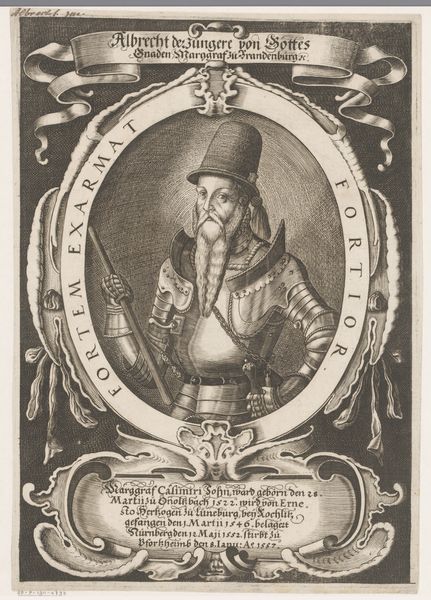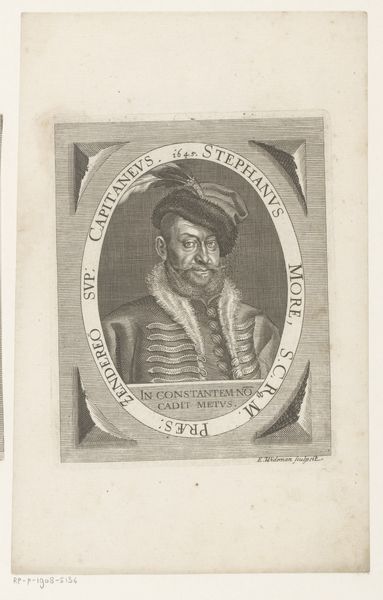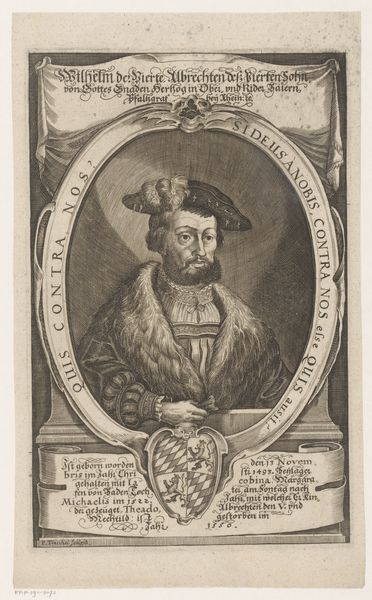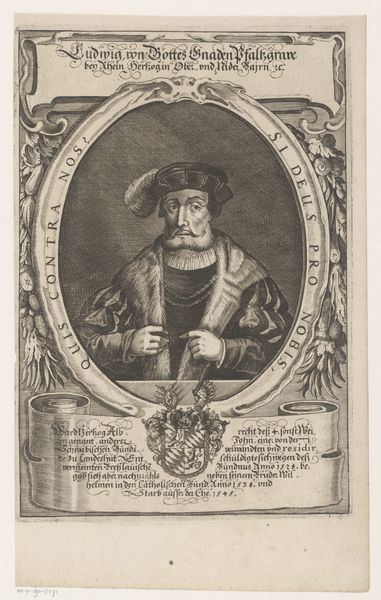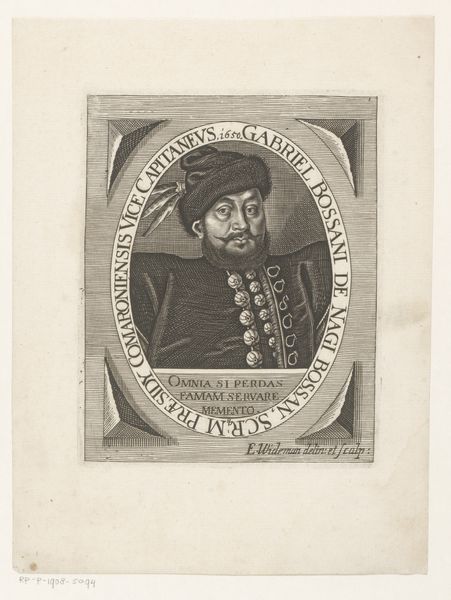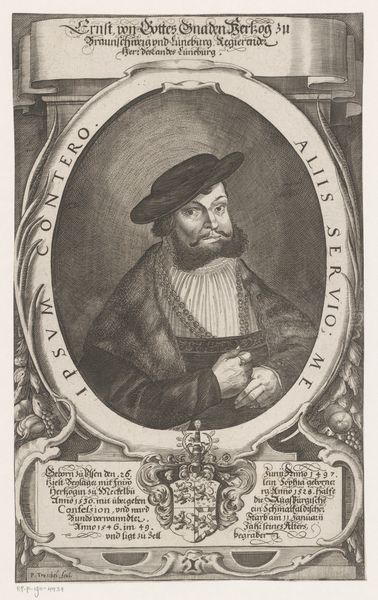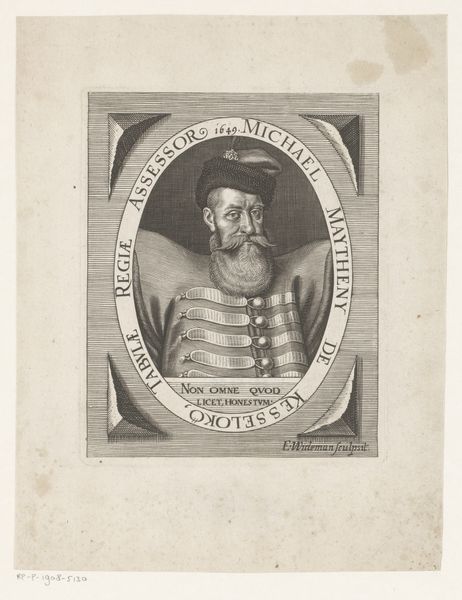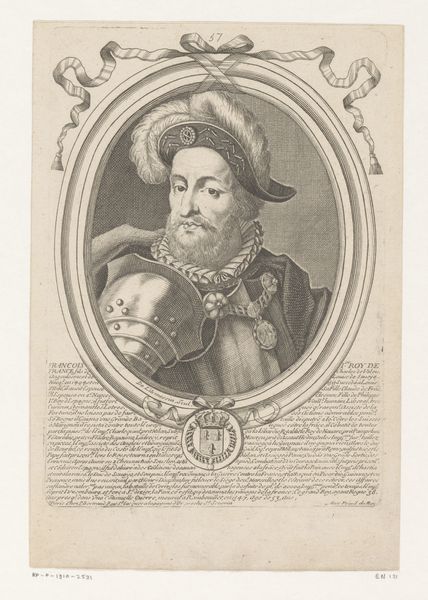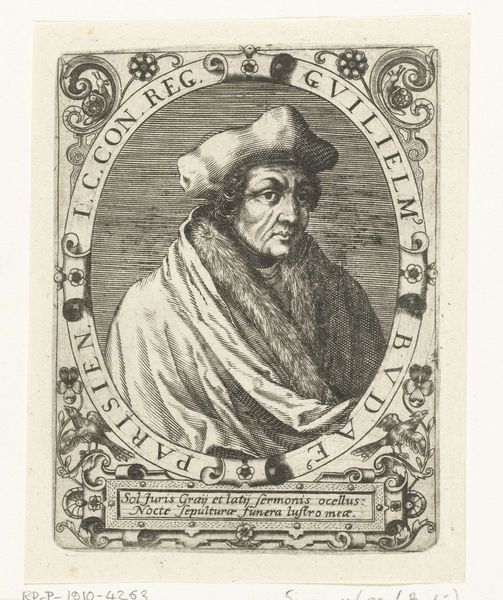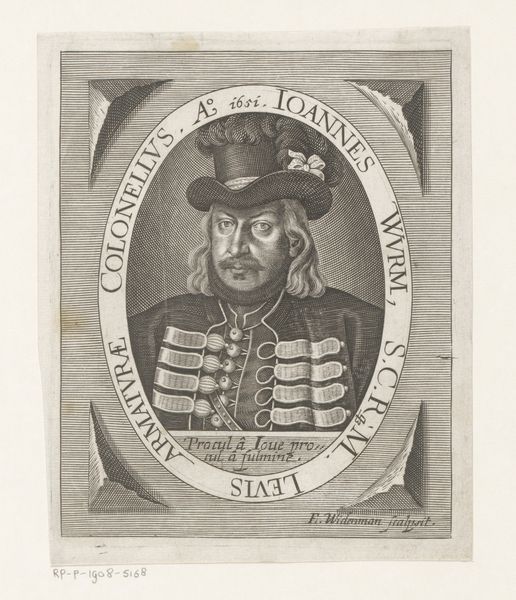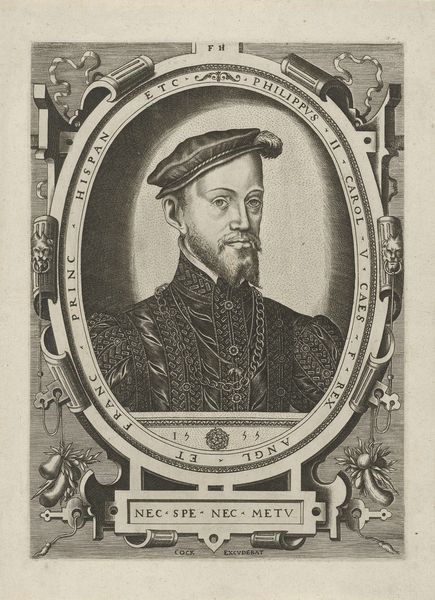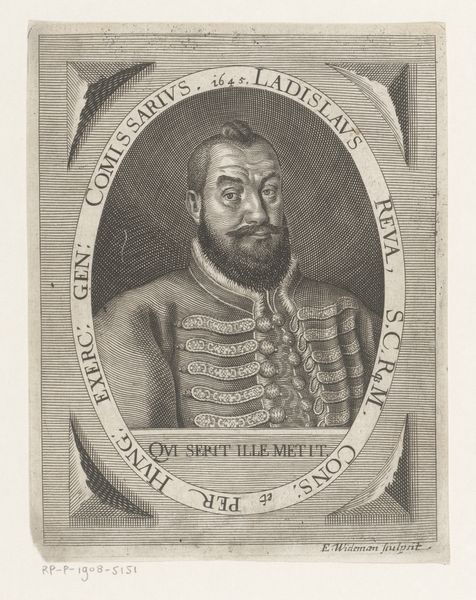
engraving
#
portrait
#
baroque
#
history-painting
#
engraving
Dimensions: height 149 mm, width 119 mm
Copyright: Rijks Museum: Open Domain
Editor: So, here we have Elias Widemann's "Portret van Pál Serényi von Kis-Serény" from 1649. It's an engraving. The detail is amazing. The subject's garments look very finely woven and decorated. What strikes you about this piece? Curator: For me, it's about the material process of making a portrait accessible. An engraving democratizes image production. Think about the labor involved – the skilled artisan carefully translating visual information into a reproducible format. The paper, the ink, the press – all play a crucial role in circulating power and status. Consider how that differs from an oil painting only the wealthy could acquire. Editor: That's fascinating! I hadn't considered the printing process itself as integral to the portrait's meaning. It's not just about immortalizing the subject. Curator: Exactly! It's about distributing a *representation* of power. Engravings were commodities too. How were they sold, collected, and consumed in 17th-century society? What kind of workshops or studios would have been in operation for that time? The Latin text included on this artwork speaks of “Deo et Cæsari Fidelis Perpeptvo”: how is loyalty sold? Editor: Right, that makes me wonder, how accessible *was* this engraving really? Were there different grades of paper or print quality? Curator: Excellent question. Understanding the materiality – the types of paper, the ink formulas, the wear and tear on the printing plates – tells us about the intended audience and the longevity of the image. It gives us a perspective on how those images and their implied meanings were circulated for centuries afterward. Editor: This has given me so much to think about regarding art as not only an aesthetic statement, but also a material object with a specific function and economic reality. Curator: Precisely! Looking at the materials and the making process helps us unearth layers of meaning often overlooked in art history.
Comments
No comments
Be the first to comment and join the conversation on the ultimate creative platform.
